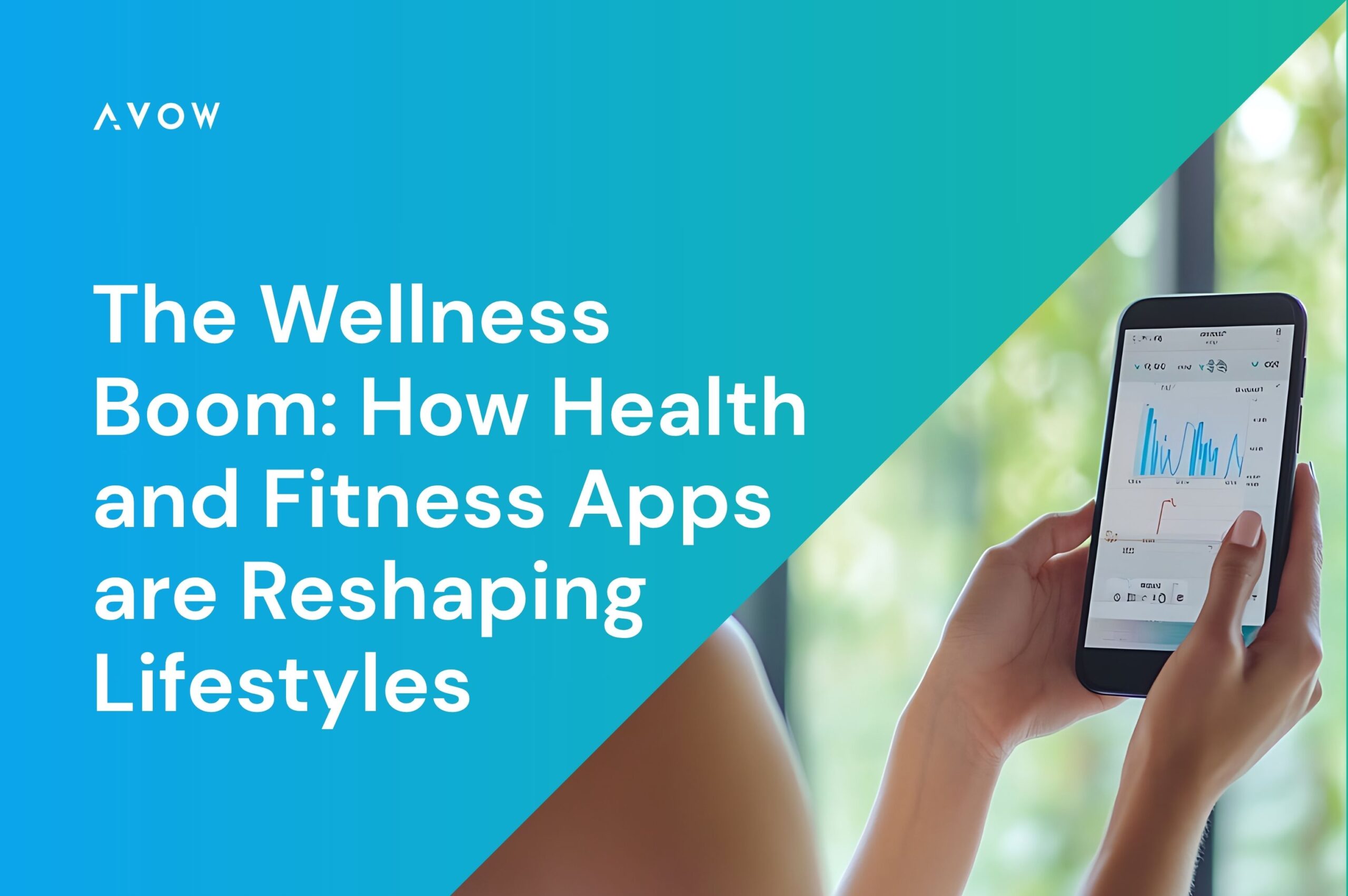The global wellness economy has undergone a seismic shift—a significant, rapid transformation—from a niche market of gyms into a $6.3 trillion movement redefining how people approach health. At the heart of this change are health and wellness apps, which have become indispensable tools for the modern, proactive consumer, empowering them to take control of their health and well-being.
It isn’t just a side trend but a permanent cultural shift in which people are actively investing in wellness solutions that prevent illness, boost performance, and enhance overall well-being.

The digital evolution of fitness and health culture
You can break down the transformation of the fitness industry over the last fifteen years into three key phases, all accelerated by the exciting potential of technology and shifting consumer behavior.
In the early 2010s, fitness was primarily confined to a monthly gym membership. However, the rise of social media platforms quickly turned fitness into a public lifestyle and a form of self-care, moving away from the old “no pain, no gain” mantra to “move to feel good”.
- Influencer culture: Platforms like Instagram and YouTube gave rise to fitness influencers who shared their workout routines, meal plans, and motivation, inspiring millions of people globally.
- Holistic focus: This cultural shift sparked a wellness revolution that emphasized mental health, mindfulness, and nutrition as much as physical strength. Wellness startups are now stepping in to cater to these changing values.
Phase 2: The experience economy and at-home tech
Around 2012, boutique studios introduced the “experience economy,” offering specialized workouts with a social twist and an atmosphere of belonging. The mid-2010s then saw technology integrate deeply into the wellness space.
- Wearable technology: Devices like Fitbit, Apple Watch, and WHOOP allow users to track health metrics like heart rate, sleep quality, and activity levels.
- App adoption: Health and wellness apps like Peloton and Strava transformed smartphones into personalized trainers and global leaderboards, giving consumers unprecedented access to data and accountability.

Phase 3: The post-pandemic digital permanent shift
The pandemic acted as a massive accelerator, making virtual workouts the new norm and proving the fitness industry could thrive beyond physical spaces. Home gyms, smart mirrors, and streaming services took over living rooms, ensuring the shift to digital consistency was permanent.
The rise of mental wellness and holistic care
The definition of wellness has expanded far beyond just physical fitness; it now encompasses recovery, sleep, and mental clarity. Younger generations are primarily driving this holistic perspective by prioritizing mental health.

1. The mental health app boom
Mental health apps have exploded in demand, making solutions more broad-reaching and accessible. The worldwide market for mental health applications, which was valued at $6.52 billion in 2024, is expected to grow to $23.80 billion by 2032, demonstrating a Compound Annual Growth Rate (CAGR) of 18.0%.
- Digital therapy: These apps fall into several categories, including mindfulness and meditation apps (like Calm or Headspace), self-help (Cognitive behavioral therapy-based), mood tracking, and professional support.
- Subscription growth: Funding for popular meditation apps like Calm soared, indicating the market’s growth potential. The increased prevalence of neurological diseases and stress-related disorders (due to work-life imbalance) is a primary market driver.
- Homecare dominance: The homecare settings segment held the highest market share in 2024, demonstrating that users prefer convenient, self-managed digital tools.
2. The generational shift in spending
Millennials and Gen Z are the primary catalysts of the wellness economy, driving a permanent shift in consumer values.
- Disproportionate spending: While Gen Zers and Millennials make up just over a third (36%) of the adult population in the U.S., they drive more than 41% of annual wellness spend.
- Priority gaps: Younger generations prioritize wellness attributes differently from older cohorts. They place higher importance on sexual health and skin and hair care.
- Discretionary spending: Gen Z and Millennials are more open to experimentation, spending heavily on discretionary wellness products like health-tracking devices, beauty apps, and boutique studio classes.
The wellness economy and its impact on healthcare
The massive scale of the wellness sector—projected to hit $9 trillion by 2028—is creating a seismic shift in traditional healthcare. Healthcare providers are no longer just curing illness; they are competing with billion-dollar wellness brands.
1. New consumer expectations
Today’s wellness consumer is proactive, viewing health as continuous management rather than episodic treatment.
- Digital demand: Patients expect telehealth, app integration, and remote monitoring as part of their everyday health journey.
- Prevention focus: More consumers are actively seeking preventive guidance, driven by the fact that chronic disease causes 74% of global deaths (World Health Organization).
- Holistic Demand: Patients expect care that addresses physical, mental, and emotional health in one place.
2. The rise of functional nutrition and longevity
Two major growth areas in wellness demonstrate how health is moving into daily consumer products:
- Functional nutrition: This sector is rapidly expanding with foods and beverages that claim to deliver specific health benefits (e.g., energy, gut health, immunity). Consumers are looking for products that actively include high-value components (protein, nootropics) rather than just being “free from” components like sugar or gluten.
- Longevity: Demand for products supporting longevity is growing, with a cultural shift among younger generations taking a proactive, rather than reactive, approach to healthy aging. It includes everything from age-testing kits to supplements that claim to slow cellular aging.
3. Adapting to the digital health ecosystem
To adapt and thrive, healthcare providers must integrate wellness into their offerings.
- Data integration: Clinics are integrating wearable data (from Fitbit or Apple Health) into consultations for real-time lifestyle tracking and personalized care.
- Strategic partnerships: Collaborating with wellness companies (like post-cardiac rehab working with fitness centers) expands the reach of medical services.
- Proactive models: Moving toward continuous health management, such as offering exercise prescriptions, nutrition counseling, and sleep optimization plans, aligns traditional medicine with the new wellness culture.
Conclusion
The wellness boom has created a permanent, multi-trillion-dollar market where people define health through proactive, continuous, and personalized self-management. The future lies in hyper-personalized, tech-enabled solutions integrated seamlessly into daily routines.
For app developers and marketers, the challenge is clear: we must continue to innovate health and wellness apps—from sophisticated fitness apps that adapt the workout plan to bio-monitored sleep programs—that close the persistent gaps in mental health and cognitive function reported by today’s consumers.
The next wave of the wellness boom will feature increasingly personalized and integrated solutions, as technology advances and our understanding of health and wellness deepens. Those who build transparent, science-backed solutions that deliver demonstrable value will lead this vibrant, rapidly expanding wellness sector.
Stop fighting for visibility on crowded app stores. AVOW’s mobile OEM advertising platform provides the strategic advantage of the OEM channel, offering premium placements that bypass the clutter. We provide direct access to 86% of the global Android market and over 1.85 billion daily active users worldwide, connecting your wellness solution with the users most likely to commit to a long-term subscription plan.
Ready to acquire high-value, high-retention users and scale your share of the global wellness sector?
Contact us now to design your health and wellness app growth strategy.
About the Author






